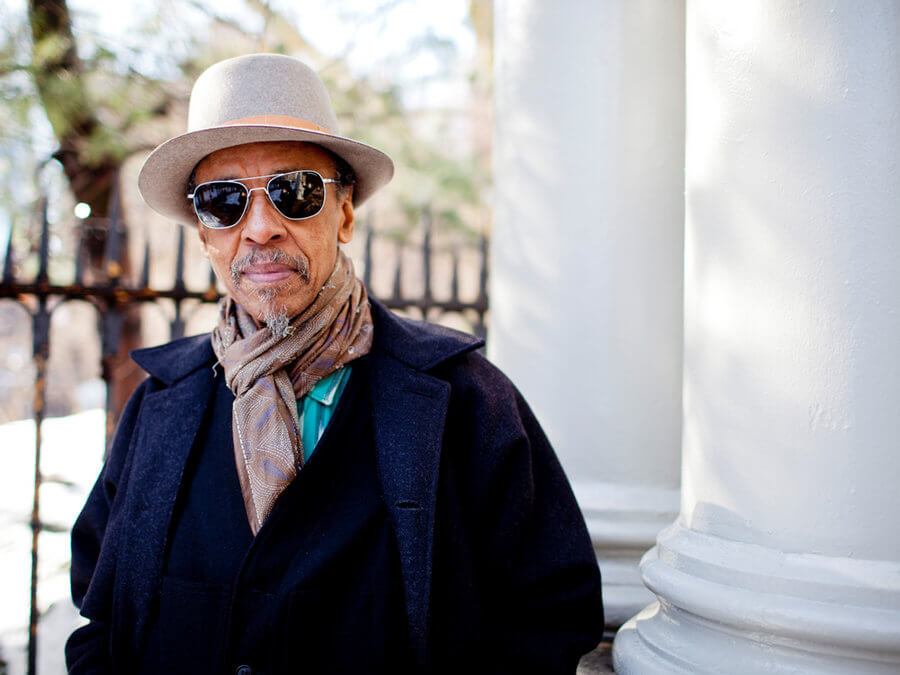Henry Threadgill, photo by John Rogers
Jazz is not just modern, but modernist; not just part of the last 100 years of cultural history, but a music that took old and existing language and made it new. Bebop was an explicit modernist, even avant-garde, movement that took existing popular material, like “How High The Moon,” and gave it a new voice from the inside out, breaking down the old melodies and rhythms and rebuilding them with an entirely new vocabulary.
Bebop has been the main foundation of all the jazz that his followed, though older styles like swing have maintained a parallel life. And even swing and what might be called “trad” were modernist as well. The whole point of jazz, when it first appeared shortly after World War One, was that it was a new music, avant-garde, hot, even—as was a common reaction—a menace to society (a consistent reaction by the bourgeoisie to anything new that might involve young people and even bring together other races).
And don’t overlook how revolutionary the pre-swing musicians were, with Louis Armstrong single-handedly inventing modern popular singing,Jelly Roll Morton pioneering a compositional style that brought together 19th and 20th century music and improvisation, Bix Beiderbecke’s all-too brief experiments in impressionism, even Benny Goodman commissioning a new classical work from Bela Bartók (Contrasts, 1938). Since Miles Davis’ ongoing and permanent revolution came to a halt with his retirement (prior to his comeback), the great jazz modernist has been saxophonist/flutist, composer, and bandleader Henry Threadgill.
Threadgill is one of the many exceptional musicians who came up during the founding era of the Association for the Advancement of Creative Musicians (AACM)—not as a member but as an associate of AACM figures like Muhal Richard Abrams and Fred Hopkins. The AACM was essentially a Mt. Olympus of jazz, from which descended some of the most important figures in jazz of the last 60 years.
The standard bearers of the AACM were the Art Ensemble of Chicago; the ensemble’s motto was “Great Black Music, Ancient to the Future,” a description less of style than a philosophy that there is a seamless continuum between things like ragtime, the blues, rock, reggae, and free improvisation, that they were all just variations on the same concept and with shared aesthetic and social functions.
Threadgill’s career is like this too. His early trio Air, and his Sextet (with seven musicians) were avant-garde on the surface, breaking out of standard forms and harmonies, but with roots in 19th century music like ragtime and marches. Those earlier styles aren’t just essential components to the origin of jazz, but music that Threadgill himself found pleasure in and recreated in modern terms.
That continuum of great Black music is in him, it was his own experience as a musician, from playing gospel, blues, rock, and after hitting New York City playing with no wave musician James Chance, in David Murray’s important Octet, and in some of Bill Laswell’s Material projects. Threadgill had his Bitches Brew type leap into the future with his 1990 album Spirit of Nuff…Nuff (Black Saint), with his band Very Very Circus, which had Threadgill, trombonist Curtis Fowlkes, drummer Gene Lake, and two guitarists (Brandon Ross and Masujaa) and two tuba players, Marcus Rojas and Edwin Rodriguez.
As jagged and contemporary, and rocking, as the sound was, the music still reach back 100 years, with plenty of marches and the tubas recalling how the instruments (and the bass saxophone) are all over early acoustic and electric recordings, because the string bass didn’t carry well through the ensembles.
Like with Davis’ electric period, Threadgill’s music since that album has been built on a groove that anchors flights of abstraction above. Different from Davis, Threadgill’s grooves are lighter, sharper, and his abstraction is contrapuntal and based around harmony, rather than the hypnotic, dense sound of albums like Agharta and Pangea.
The main vehicle for this in the 21st century is band Zooid, which debuted on Pi Recordings in 2001 with Up Popped the Two Lips and can be heard on several more recordings on the label, including last year’s Poof. Zooid has had varying personnel but is formed around the leader, guitarist Liberty Ellman, and tuba player Jose Davila—cellist Christopher Hoffman has been a newer, but consistent, presence. With Zooid, Threadgill has been developing a new way of organizing jazz, one that is very much jazz, very much modern, and very much a sophisticated way to compose in the long tradition of counterpoint heard through the lens of traditional jazz’ improvisational polyphony.
This music is tonal but shifting, the musicians work with a set of intervals that keep the harmonies together while allowing movement to other chords. It’s like a labyrinth with multiple ways both to get to the center and out again, with the soloist in the lead and the band at his heels, following every turn and switch. Each room the ensemble enters is new, but has an architectural style that fits with all the other rooms, and the labyrinth itself.
Playing this takes ultra-quick thinking, and in a ways listening to it does as well. It’s something of an acclimation process, like listening to music in older tuning systems—it takes a minute to get used to, but then it all makes so much sense that everything you heard before sounds a little stale. For musicians, it’s an exciting challenge, and one can listen through the Zooid discography, and remember catching the band live at different times, and hear all the players, get more and more comfortable with what they’re doing, going from spitting out short phrase to putting together longer lines that fit with the incredible sinuousness of Threadgill’s thinking.
The albums are hard to differentiate, but this isn’t a knock on them, as each one is an installment in the development of a practice. I honestly can’t remember a single one of Threadgill’s track titles, because each album sounds like a continuous journey with brief stops for rest. In this way, Poof fits in with the others, and doesn’t make sense without the others. Don’t just add that to your collection, and them all, you’ll find it more fulfilling.
The exception to this is In for a Penny, In for a Pound, which premiered live in 2014 as a work in progress, was released by Pi in 2015, and won the 2016 Pulitzer Prize for music. Large-scale, passing through many moods and eschewing rhythm and groove for long stretches, it’s composed in a way that is more acceptable to award committees who value the paper tradition of notation, and see it as more sophisticated, than the oral tradition of a lot of jazz. It’s a remarkable record, you just won’t tap your foot and bob your head to it as much as the other Zooid releases. On its own, or as an emblem of Threadgill’s great career, it more than deserves the award.
There’s a creative restlessness at the core of all of Threadgill’s music, and that’s going to be realized on stage at Roulette later this month. May 20 and 21, there’s two concerts going on, One and The Other One. Dedicated to Milford Graves, and in memory of the sorely missed Greg Tate, the music—notated and improvised—is not for the Zooid band but for a larger ensemble of horns and strings. And more than music, there will also be film, paintings, photographs, electronics, and voice loops. This is going to be yet another new thing from Threadgill, and count on it being spectacular.
Author
-

George Grella wrote the book on Miles Davis’ Bitches Brew. He write other stuff too. killyridols.substack.com/
View all posts
George Grella wrote the book on Miles Davis’ Bitches Brew. He write other stuff too. killyridols.substack.com/










